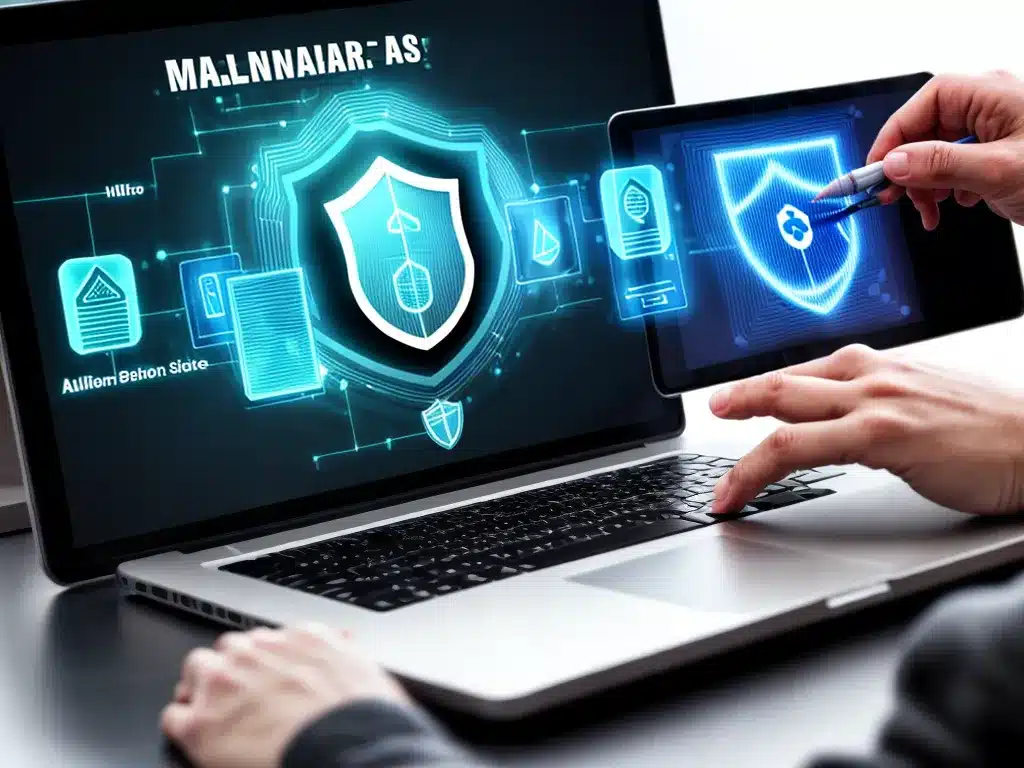Introduction
Malware infections can cause significant problems on our computers, phones, tablets, and other devices. These malicious programs are designed to access our data, damage our files, track our activity, and much more. While cybersecurity software is important, there are also preventative steps we can take to avoid malware in the first place. In this article, I will provide an in-depth look at how to keep malware off your devices.
Be Cautious with Downloads and Attachments
One of the most common ways malware spreads is through infected downloads and email attachments. Here are some tips to avoid issues:
-
Only download software from trusted and verified sources – Stick to official app stores like Google Play and the App Store which screen for malware. Be wary of third party app stores.
-
Avoid pirated software – Cracked or pirated software often contains malware bundled into the installers. It’s better to use free legitimate software when possible.
-
Scan downloads with antivirus software – Quickly scan any downloaded files and software installers with your antivirus before opening them. This can detect potential threats.
-
Don’t open suspicious attachments or links – Be cautious of email attachments you weren’t expecting and links from unknown sources. Hover over links to see if the URLs look legitimate.
-
Update software regularly – Developers issue updates to patch security flaws that malware exploits. Keep everything updated.
Practice Safe Browsing Habits
The websites we visit can also be a source of malware infections. Here’s how to browse the web safely:
-
Avoid questionable websites – Stick to well-known sites and be wary of websites with lots of intrusive ads or popups. These sites tend to be common malware hosts.
-
Don’t click suspicious links/ads – Be cautious when clicking links in emails, social media posts, online ads, and more. Hover over them first to see if the URLs look legitimate.
-
Use ad blocking extensions – Browser extensions like uBlock Origin can block harmful ads and trackers that may contain malware.
-
Enable popup blockers – Popup blockers built into browsers can prevent malicious new tabs/windows from opening.
-
Browse securely – Use HTTPS connections when available and avoid sensitive transactions on public WiFi.
Keep Software and Security Up-to-Date
Outdated software is vulnerable to new methods of malware distribution. Here are some good security habits:
-
Update operating systems regularly – Always install the latest OS updates which contain vital security patches. Enable automatic updates if possible.
-
Update applications frequently – Apps like browsers, Microsoft Office, Adobe products, and more should be updated when new versions are released.
-
Run antivirus scans – Use robust antivirus software and run regular system scans to detect and remove any potential malware.
-
Don’t use outdated software – Avoid older programs that are no longer supported and may have unpatched vulnerabilities.
-
Enable firewalls – Firewalls monitor network traffic and block suspicious connections. Use the firewall built into your OS.
Be Wary of Suspicious Activity
Signs of a malware infection include unusual behavior like:
-
Sluggish performance – Malware running in the background can slow down devices.
-
Frequent crashes or freezes – Malware may make programs unstable.
-
New toolbars/browser addons – Malware often installs additional components like new toolbars.
-
Popups and unwanted ads – Increased popups and ads can indicate an adware infection.
-
Unknown programs running – Check task manager and app menus for any unusual programs or processes.
-
High data or bandwidth usage – Malware may connect to outside servers and use data.
If you notice any of these issues, run a malware scan to check for infections. The sooner its detected, the less harm done.
Conclusion
By being cautious with downloads, practicing secure web browsing, keeping software updated, and monitoring for suspicious activity, we can avoid many common malware threats. No single method is perfect, so a combination of preventative measures is best to keep our devices infection-free. Though it requires some diligence, protecting against malware is well worth it for the safety of our data and devices.












